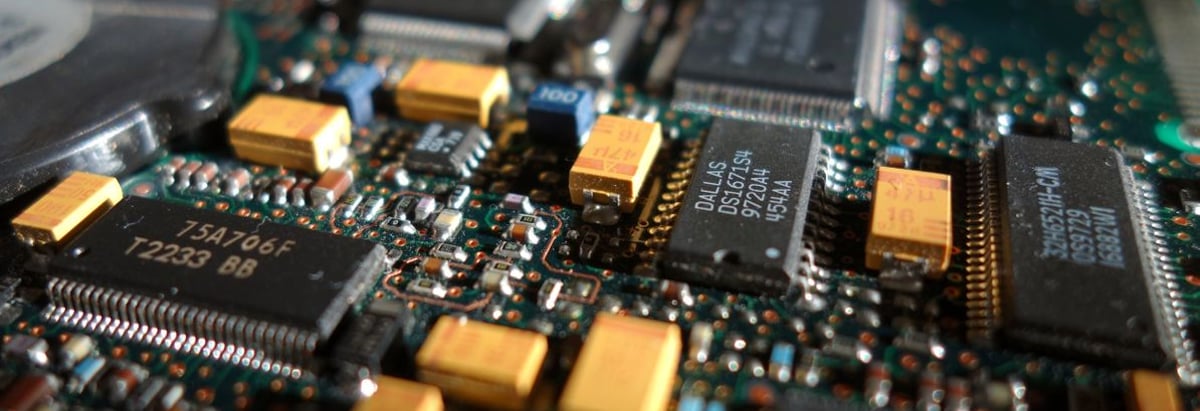- United States
- /
- Semiconductors
- /
- NasdaqGS:SYNA
These 4 Measures Indicate That Synaptics (NASDAQ:SYNA) Is Using Debt Reasonably Well

Howard Marks put it nicely when he said that, rather than worrying about share price volatility, 'The possibility of permanent loss is the risk I worry about... and every practical investor I know worries about.' So it might be obvious that you need to consider debt, when you think about how risky any given stock is, because too much debt can sink a company. As with many other companies Synaptics Incorporated (NASDAQ:SYNA) makes use of debt. But is this debt a concern to shareholders?
What Risk Does Debt Bring?
Debt and other liabilities become risky for a business when it cannot easily fulfill those obligations, either with free cash flow or by raising capital at an attractive price. If things get really bad, the lenders can take control of the business. However, a more common (but still painful) scenario is that it has to raise new equity capital at a low price, thus permanently diluting shareholders. Of course, debt can be an important tool in businesses, particularly capital heavy businesses. The first thing to do when considering how much debt a business uses is to look at its cash and debt together.
Check out our latest analysis for Synaptics
What Is Synaptics's Debt?
The chart below, which you can click on for greater detail, shows that Synaptics had US$468.3m in debt in June 2019; about the same as the year before. However, it also had US$327.8m in cash, and so its net debt is US$140.5m.

How Strong Is Synaptics's Balance Sheet?
Zooming in on the latest balance sheet data, we can see that Synaptics had liabilities of US$253.9m due within 12 months and liabilities of US$498.6m due beyond that. Offsetting these obligations, it had cash of US$327.8m as well as receivables valued at US$230.0m due within 12 months. So its liabilities outweigh the sum of its cash and (near-term) receivables by US$194.7m.
Since publicly traded Synaptics shares are worth a total of US$1.05b, it seems unlikely that this level of liabilities would be a major threat. Having said that, it's clear that we should continue to monitor its balance sheet, lest it change for the worse.
In order to size up a company's debt relative to its earnings, we calculate its net debt divided by its earnings before interest, tax, depreciation, and amortization (EBITDA) and its earnings before interest and tax (EBIT) divided by its interest expense (its interest cover). Thus we consider debt relative to earnings both with and without depreciation and amortization expenses.
Given net debt is only 1.1 times EBITDA, it is initially surprising to see that Synaptics's EBIT has low interest coverage of 0.80 times. So one way or the other, it's clear the debt levels are not trivial. We also note that Synaptics improved its EBIT from a last year's loss to a positive US$14m. When analysing debt levels, the balance sheet is the obvious place to start. But it is future earnings, more than anything, that will determine Synaptics's ability to maintain a healthy balance sheet going forward. So if you're focused on the future you can check out this free report showing analyst profit forecasts.
Finally, a business needs free cash flow to pay off debt; accounting profits just don't cut it. So it is important to check how much of its earnings before interest and tax (EBIT) converts to actual free cash flow. Over the last year, Synaptics actually produced more free cash flow than EBIT. There's nothing better than incoming cash when it comes to staying in your lenders' good graces.
Our View
Synaptics's interest cover was a real negative on this analysis, although the other factors we considered were considerably better There's no doubt that its ability to convert EBIT to free cash flow is pretty flash. Considering this range of data points, we think Synaptics is in a good position to manage its debt levels. But a word of caution: we think debt levels are high enough to justify ongoing monitoring. Of course, we wouldn't say no to the extra confidence that we'd gain if we knew that Synaptics insiders have been buying shares: if you're on the same wavelength, you can find out if insiders are buying by clicking this link.
At the end of the day, it's often better to focus on companies that are free from net debt. You can access our special list of such companies (all with a track record of profit growth). It's free.
We aim to bring you long-term focused research analysis driven by fundamental data. Note that our analysis may not factor in the latest price-sensitive company announcements or qualitative material.
If you spot an error that warrants correction, please contact the editor at editorial-team@simplywallst.com. This article by Simply Wall St is general in nature. It does not constitute a recommendation to buy or sell any stock, and does not take account of your objectives, or your financial situation. Simply Wall St has no position in the stocks mentioned. Thank you for reading.
About NasdaqGS:SYNA
Undervalued with mediocre balance sheet.
Similar Companies
Market Insights
Community Narratives



